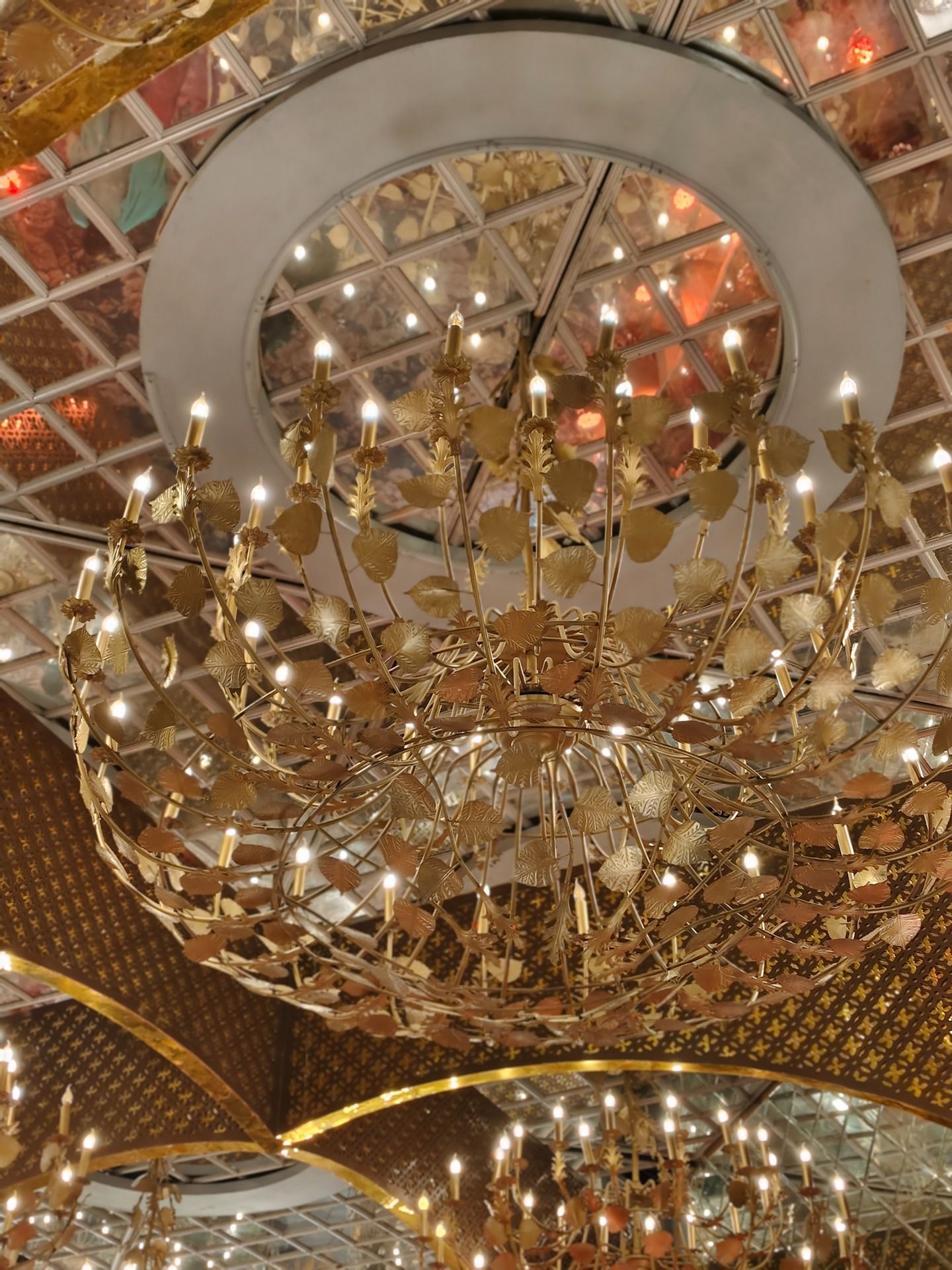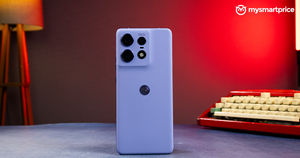
Vivo is one brand I have seen evolve tremendously, especially in the camera department. Vivo’s X series, in particular, is viewed as among the best in smartphone camera performance, rivalling the likes of Apple, Samsung, and Google. Vivo has partnered with Zeiss, the noted camera and lens maker, to improve camera performance on the X series over the years.
Vivo V30
Rs 33,999What Is Good?
- Sleek and compact design
- Excellent battery life
- Good performance
- Sharp display
- Excellent portraits
- Good night mode
What Is Bad?
- Ultra-wide could be better
- Low light portraits could be better
Thus, it was interesting that Vivo brought something similar to the V series this year. While the Pro sibling takes advantage of the Zeiss implementation, the cameras on the V30 are equally interesting. And how does it work out in the case of Vivo V30? Let’s find out in my review.

Vivo V30 Review: Camera Performance
The camera is critical to the smartphone experience for many users when considering a new device. Admittedly, finding the best camera in the mid-range segment can often be confusing. With the V30, Vivo does stand out in some areas, as I saw in my testing.
| Camera | Specifications |
| Rear Camera | Main: 50-megapixel AF camera with OIS |
| Secondary: 50-megapixel ultra-wide-angle lens; Aura Light flash | |
| Front Camera | 50-megapixel selfie camera with AF |
| Video Recording (Rear camera) | Up to 4K (30fps), 1080p (60fps),1080p (30fps),720p (30fps) 720p at 60 fps |
| Video Recording (Front camera) | Up to 4K (30fps), 1080p (60 fps and 30 fps) 720p (30fps and 60fps) |
I thoroughly enjoyed using the Vivo V30’s camera in the bright outdoors. The phone delivers crisp photos with accurate colours. It is quick to respond and focus on the subject, even if you’re on the move. I took several shots from moving cars, and the V30 had no trouble ensuring a great output. And given the stunning skies in Delhi these days, most pictures have great details.
Yes, there is a slight tendency to amp up that blue in the sky—but I would not say it looks very artificial. Using this phone in the bright outdoors will give you excellent shots with minimal effort. With the ultra-wide camera, the difference is sometimes noticeable in pictures, especially on the edges, where the details are not so sharp. But the overall picture quality is maintained well.
Regarding portraits, I used the phone to take shots of a particularly tough subject: my son. V30 does a good job of keeping him in focus in photos—especially hard, considering he rarely sits still. I enjoyed shooting portraits in the 2x mode, given the results were sharp and detailed. The portrait mode neatly segregates the subject, bringing it in sharp focus while creating the surrounding depth and blur that a good bokeh needs.
In bright outdoors or well-lit rooms, the portrait quality is excellent. However, the phone takes a few seconds to process and show the final output, so be patient. I’d say some of these are good enough to print and hang. While I enjoyed experimenting with the Portrait mode, I do feel it still needs some work when used at night or in indoor lighting.
In such conditions, the subject-background segregation feels a bit forced, and in some photos, the subject details are softer than I would have preferred.
The phone’s camera performance at night is also more than adequate. I used the phone at a wedding, and it did a fairly good job of delivering sharp results without compromising on details. There’s also the Aura Ring Light to amp up photos with minimal lighting in a very dark space. Photos taken with the Aura Ring Light turned on were sharp, with accurate details and skin colour tone, even if my angles were rather bad.
My photographer teammate found the Aura light could also double as artistic fill light, praising its granular white balance and diffusion. However, he missed the circular design from its predecessors, which created unique eye reflections called “catchlights”.
As for videos, I have not tested this aspect of the phone as much. But that OIS at the back is a useful addition. I recorded a video while on the highway with extremely shaky hands, but the final result doesn’t reflect this in a big way. Frankly, I expected a very shaky video.
The selfie camera is also good fun and will give pleasing outputs for most. I’m never satisfied with the selfies, but V30 does a pretty good job of retaining some natural textures.
The skin tone is mostly natural, though in some photos, I feel it gets a bit aggressive when smoothing the skin. However, as a user, you can experiment and tinker based on preferences.

Vivo V30 Review: Design and display
The V30 series is not all about the camera. Vivo also continues to offer a stylish and sleek design with this series. As I noted in my first impressions, the lightweight phone is easy to hold for long hours, especially when randomly scrolling for Reels on your bed or binge-watching a show.
| Display | Specifications |
| Type | AMOLED |
| Peak Brightness | 2800 Nits |
| Refresh Rate | 120Hz |
| Size | 6.68 inches |
| Resolution | 2800 × 1260 (FHD+) |
The V30 comes in three colour options: Andaman Blue, Peacock Green (which is colour-changing), and Classic Black. I have the Peacock Green variant, which turns darker when exposed to sunlight. The phone has colour-changing fluorite AG glass at the back with a smooth and glossy finish, which remains smudge-free. It has a plastic frame with a metallic finish.
| Materials | Front: Front: Schott Xensation α glass for display protection |
| Back: Glass; Peacock Green has AG Fluroite Colour-changing Glass | |
| Frame | Plastic, with customised aluminium alloy at corners |
| Dimensions | 16.436 cm × 7.510 cm × 0.745 cm (W x H x D) |
| Weight | 186g |
| Colours | Andaman Blue, Peacock Green, Classic Black |
| IP Rating | IP54 |
Vivo V30 has a curved display on the front and a slight curve at the back. I had no trouble using the phone in bright outdoors, and legibility was not an issue. The display also comes with an in-display fingerprint scanner, which responds quickly to unlock the phone.
The Vivo V30’s display was my primary source of entertainment as I rewatched some episodes of House on the phone. The experience was good, with the screen packing accurate colours. I did not need to crank up screen brightness to full capacity in some of the dimly lit scenes.

Vivo V30 Review: Performance and software
The Vivo V30 is powered by Qualcomm’s Snapdragon 7 Gen 3 chipset and is one of the first phones to sport this processor in India.
| SoC | Snapdragon 7 Gen 3 |
| RAM and storage variants | 8 GB + 128 GB 8 GB + 256 GB 12 GB + 256 GB |
| RAM type | LPDDR4X |
| Storage type | UFS 2.2 |
| Expandable storage | Not Supported |
| AnTuTu v10 Score | 804331 |
| Geekbench v6 Scores | Single-core: 1147, Multi-core: 3218 |
My gaming experience was limited to running Genshin Impact on the phone, and I found the device capable of handling the game. There was noticeable heating when playing this for a long time, which is a common issue.
If you want to compare V30’s score performance to other phones in a similar price range as well as the older V29, check out the graphs below:
For daily usage as well, the performance was smooth. I didn’t experience any crashes or slowdowns, and this should be a good enough daily driver for most users. Of course, if you want more on the gaming front, the Vivo V30 might not be enough.
The Vivo V30 runs the company’s FunTouch OS 14 with Android 14. It always takes me some time to get used to the software change. I certainly don’t enjoy the endless notifications from the V-App Store that are often turned on by default, but one can always turn those off. However, Vivo has improved the overall software experience by reducing pre-loaded apps and creating a cleaner user interface.

Vivo V30 Review: Battery
This is another solid aspect of the V30 series, which makes it easy to recommend. Despite the phone’s slim figure, Vivo hasn’t compromised on the battery size.
| Battery | Specifications |
| Battery Capacity | 5000mAh |
| Charging Speed | 80W |
| Charging Time | 100% in 48 minutes (*vivo claim) |
| Charger in the box | Yes, with a USB Type-A to Type-C cable |
The 5000 mAh battery will suffice for most users and would easily last me the whole day. Plus, with the 80W charger, you don’t need to keep this plugged in for long hours. It took me around half an hour to get to 77 per cent charge from 16 per cent, which was good enough for me.
Vivo V30 Review: Verdict
With the V30, Vivo promises excellent portraits at a mid-range price. That is true, as I saw in my testing. Getting portraits right on a mid-range phone can often be challenging, given that not all of us understand the intricacies of getting the right bokeh.
Vivo has the right mix of hardware and software to deliver well on this front, even if you are not an expert. And the rest of the camera is just as good.
The phone also packs all the right specifications, making it an appealing package. Of course, whether it can stand out against the competition on the camera bit alone will be something that only time will tell.
































